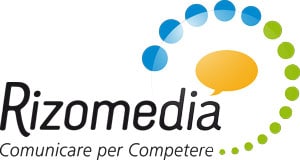In a greenhouse near Cremona, solanaceae are being irradiated with a light spectra specially developed by C-LED research facilities. The goal? To find a solution that will prevent a physiopathology which impacts tomato production.
IMOLA, 25 May 2020. A LED light-based treatment to combat a physiopathology that weakens tomato plants: this is the goal of the experiments – co-organised by C-LED and Urbinati Srl – being performed at a greenhouse in Casalmaggiore, in the province of Cremona.
Everything stems from a request made by experts at the Cortenuova farm, a specialised vegetable grower. After detecting a malaise of unknown origin that mainly affects the stem, growers in the Cremona area wondered whether technology might be able to help prevent situations critical to the health of these solanaceae and, consequently, avoid any resulting economic damage.
This common physiopathology is believed to be caused not by living organisms but, rather, by climatic factors that frequently combine with other aspects such as alterations to atmospheric gases, impact trauma, insufficient or over-abundant nutrients or improper treatment.
As always, C-LED, which enjoys unrivalled know-how as regards the development and implementation of indoor farm lighting technology, has welcomed the opportunity to test new solutions that may help solve customers’ problems. In this specific case, the main goal is to limit the onset of physiopathologies and, therefore, obtain healthier, stronger, more compact plants.
The experimentation is being conducted in a greenhouse with a surface area of just under 2,000 square metres. Here, 150 W C-LED Toplight Plus lamps have been installed over a 10-metre span. They have been connected in series thanks to the ‘through-cable’ power supply system, which simplifies the wiring, and positioned on irrigation bars supplied by Urbinati, a leading producer of automatic systems for the horticultural and nursery sectors.
The lamps, which emit a light spectrum specially designed by C-LED researchers, are moved at regular intervals by sliding them over the plants so they radiate them evenly and consistently.
In this way we believe it’s possible to stimulate plant transpiration, thus reducing humidity in the base sections of the collar and aiding the flow of water and nutrients into the plant tissues.
C-LED
C-LED is a Cefla company specialised in the design and production of personalised lighting solutions that respond to customer requirements. C-LED principally addresses businesses that operate in retail and visual merchandising, interior design, public lighting, growing and industry. The company also develops systems governed by proximity sensors and ambient sensors for interactive communications (proximity marketing) and efficient energy management of indoor spaces.
Visit the C-LED website – https://www.c-led.it/
E-mail – info@c-led.it

